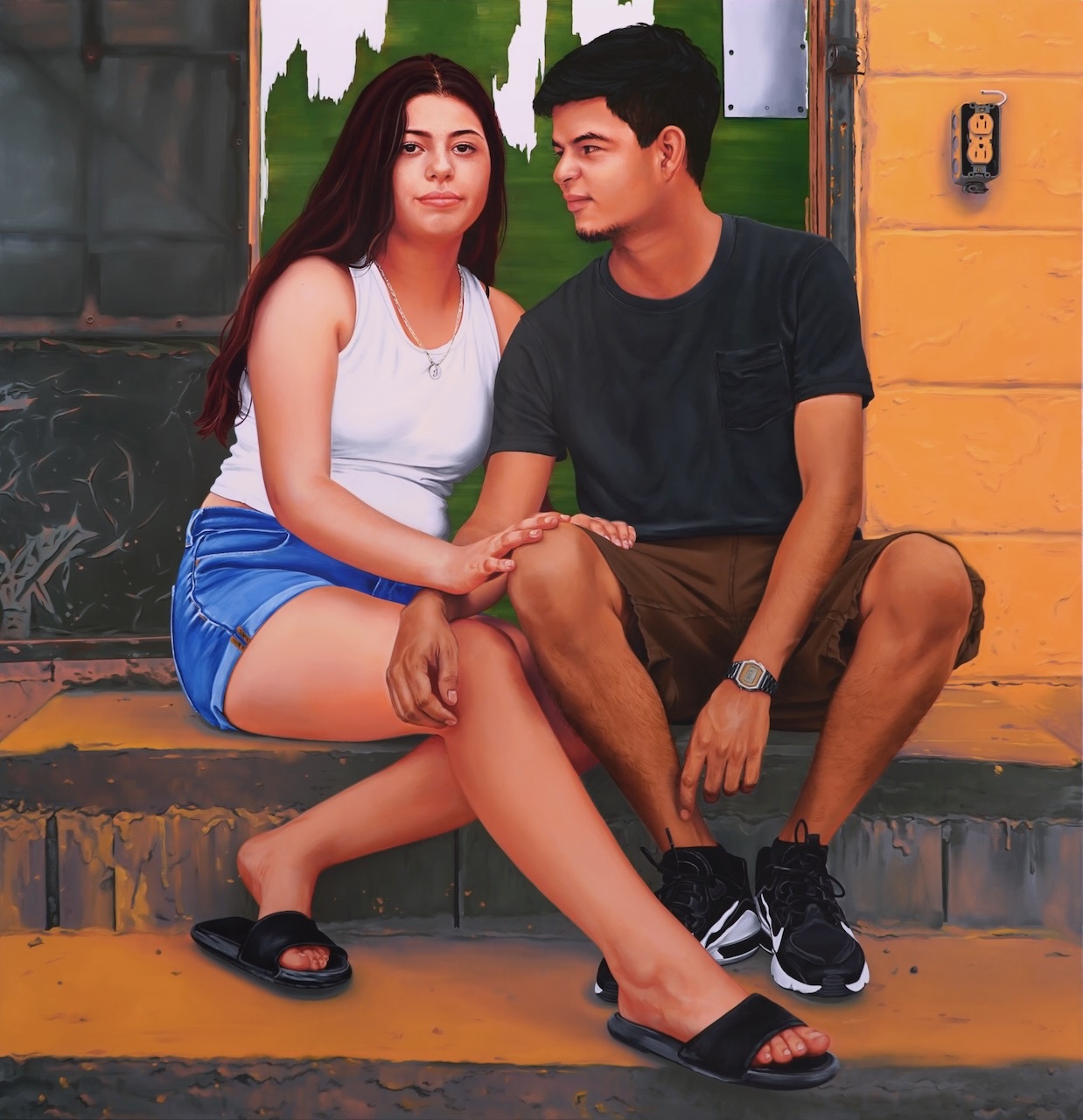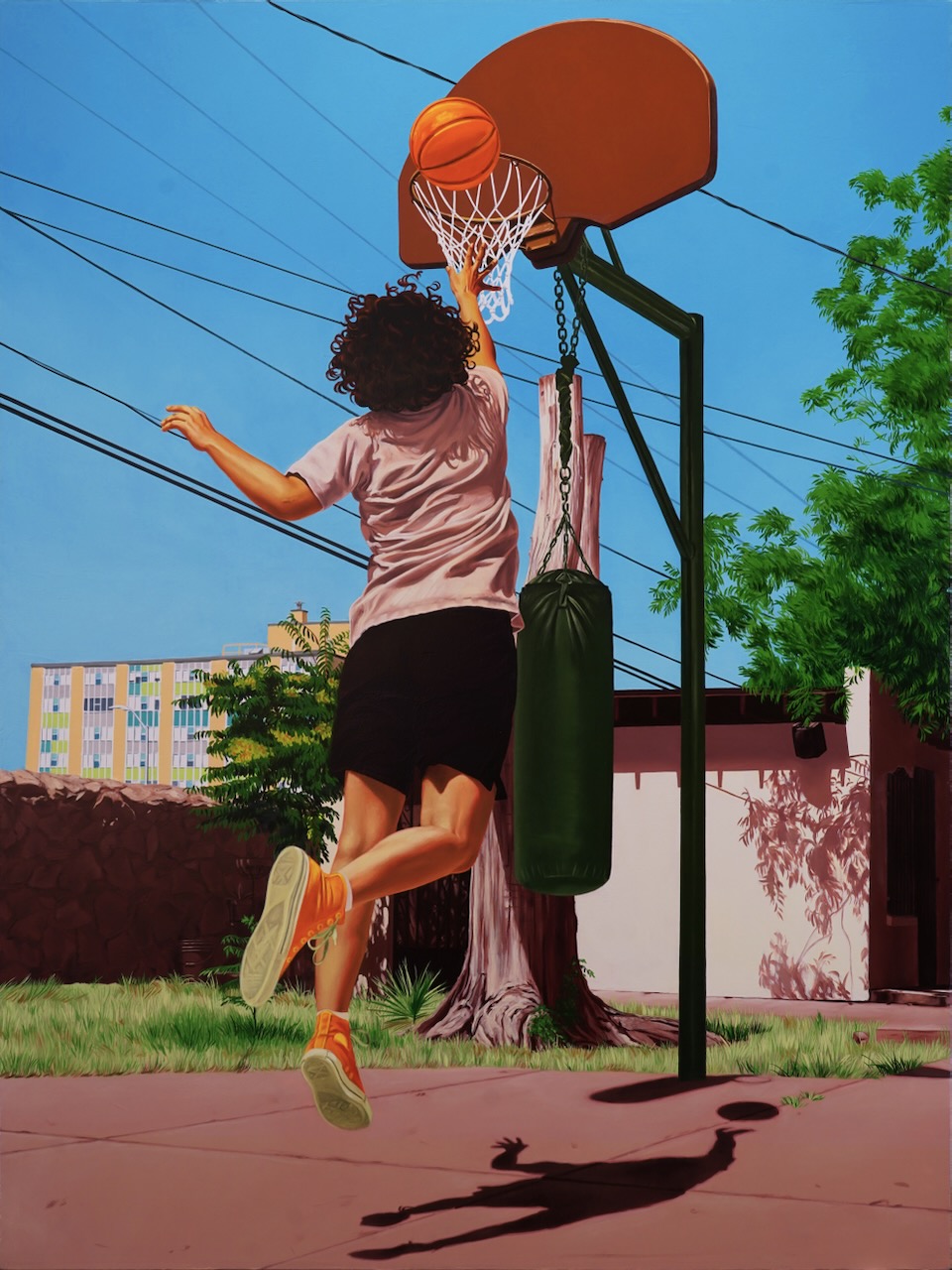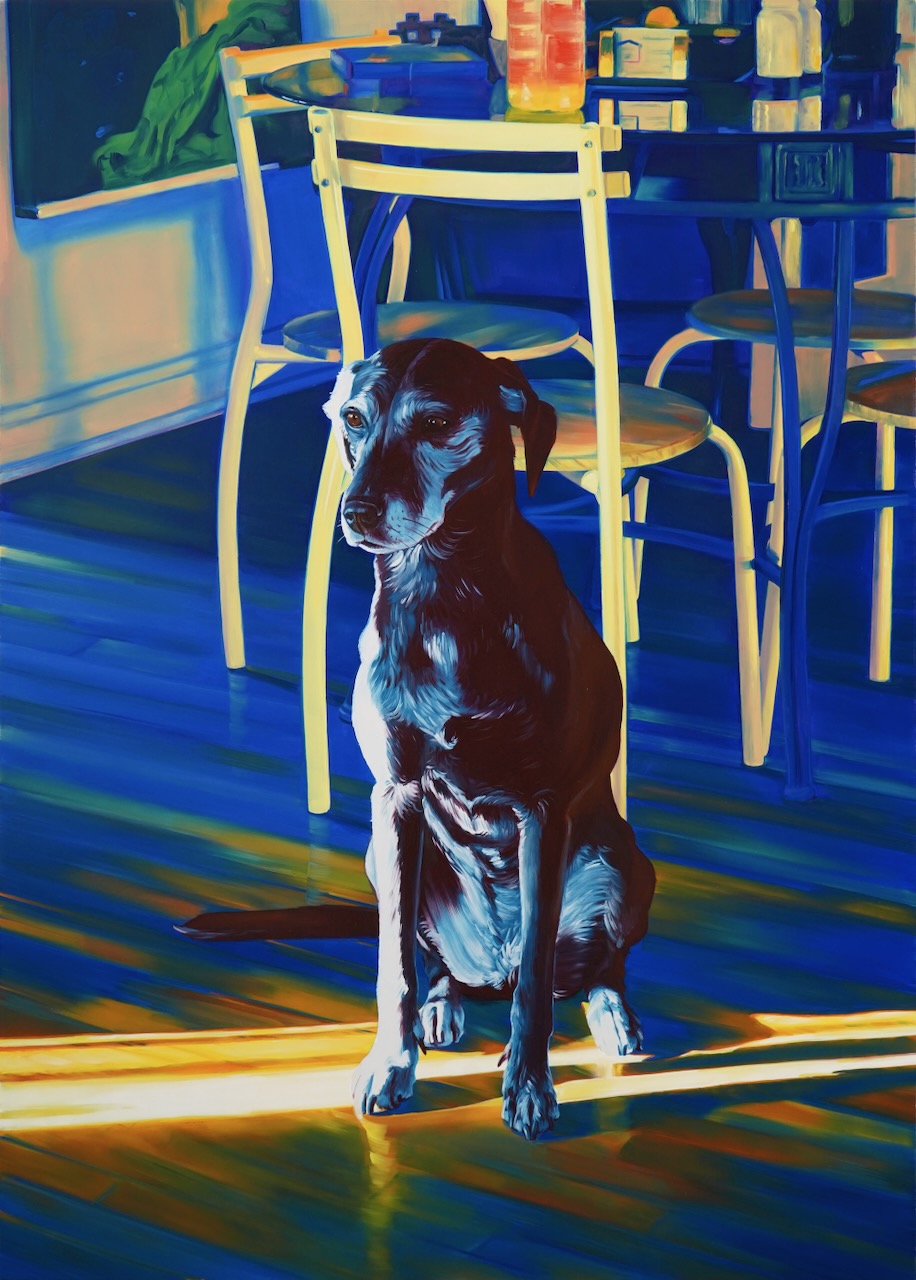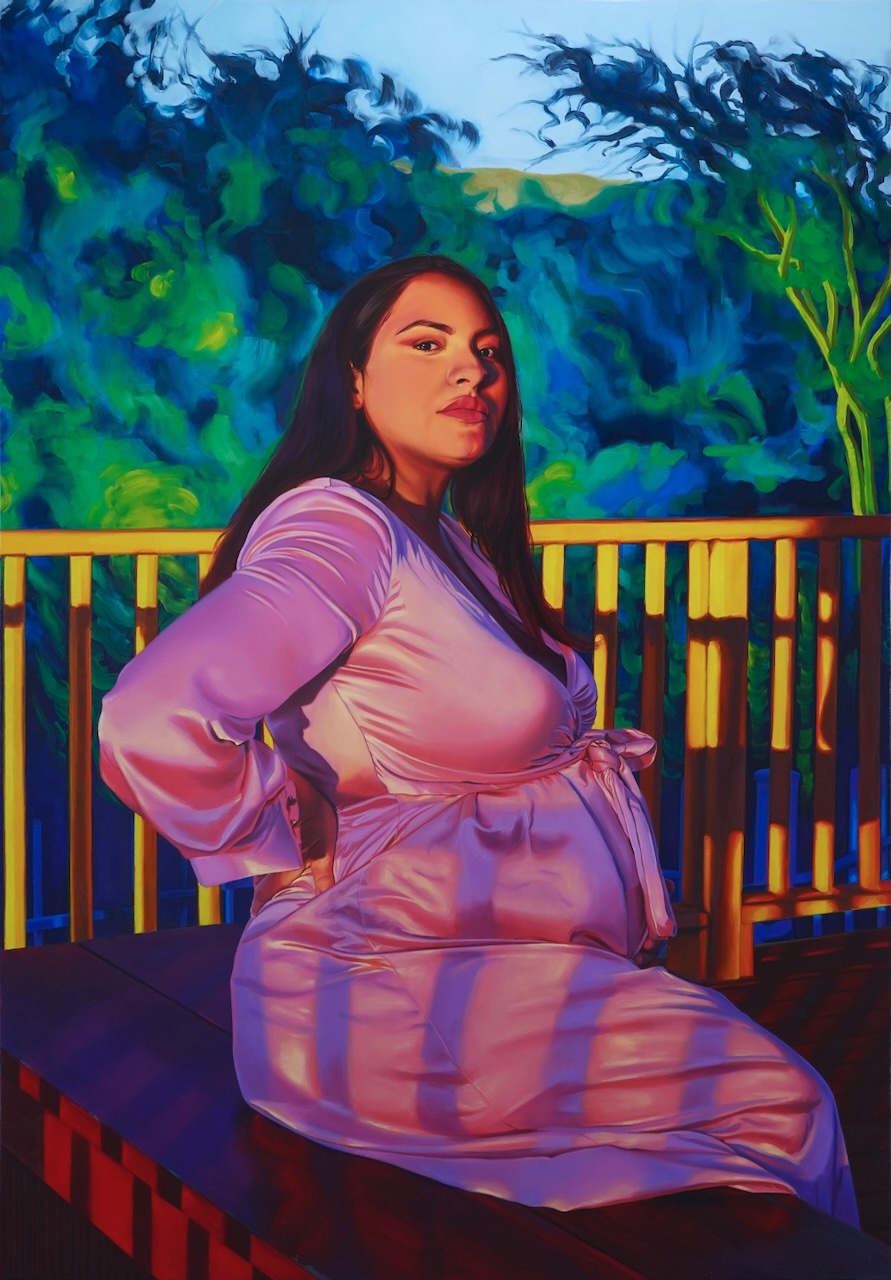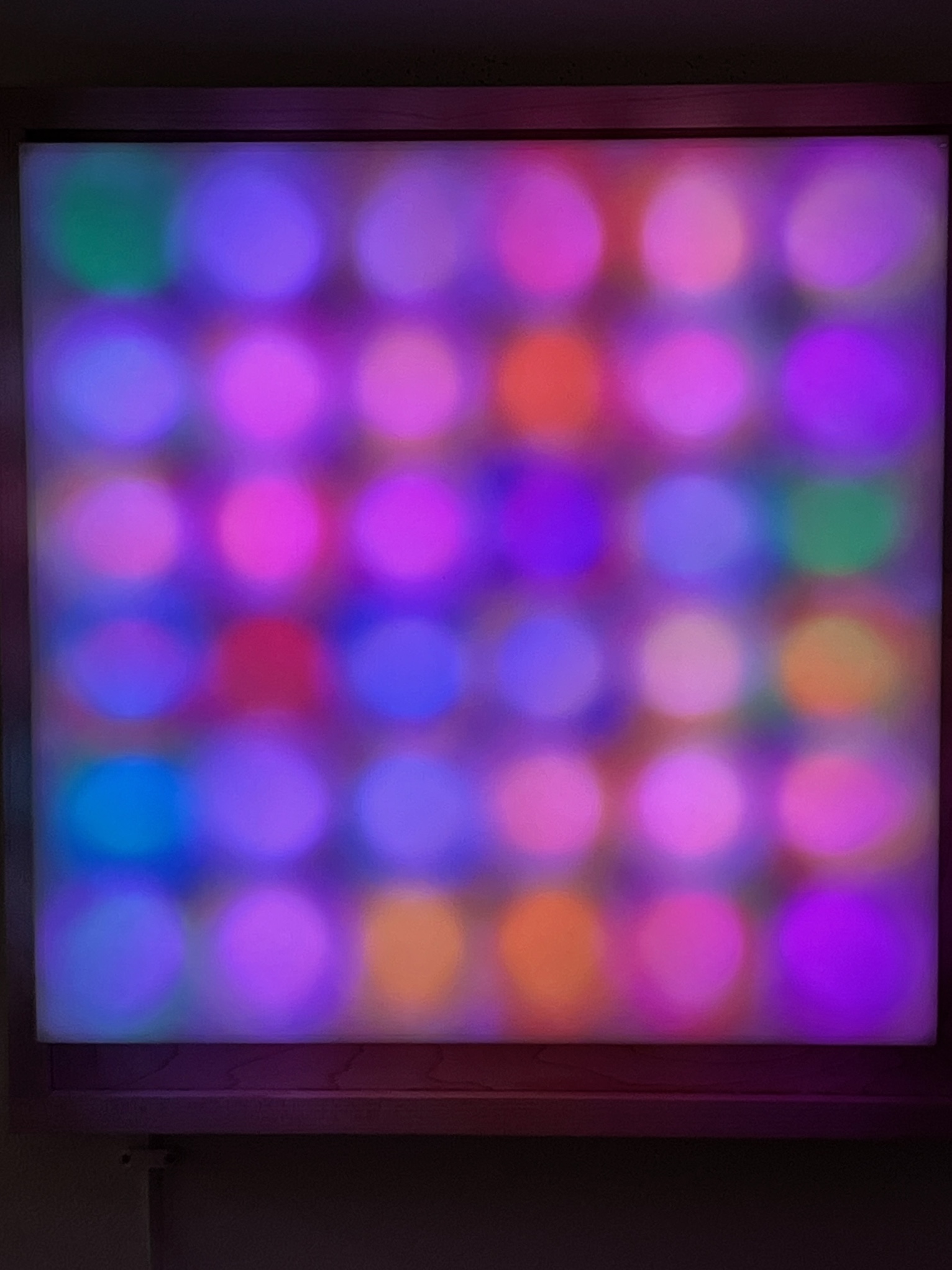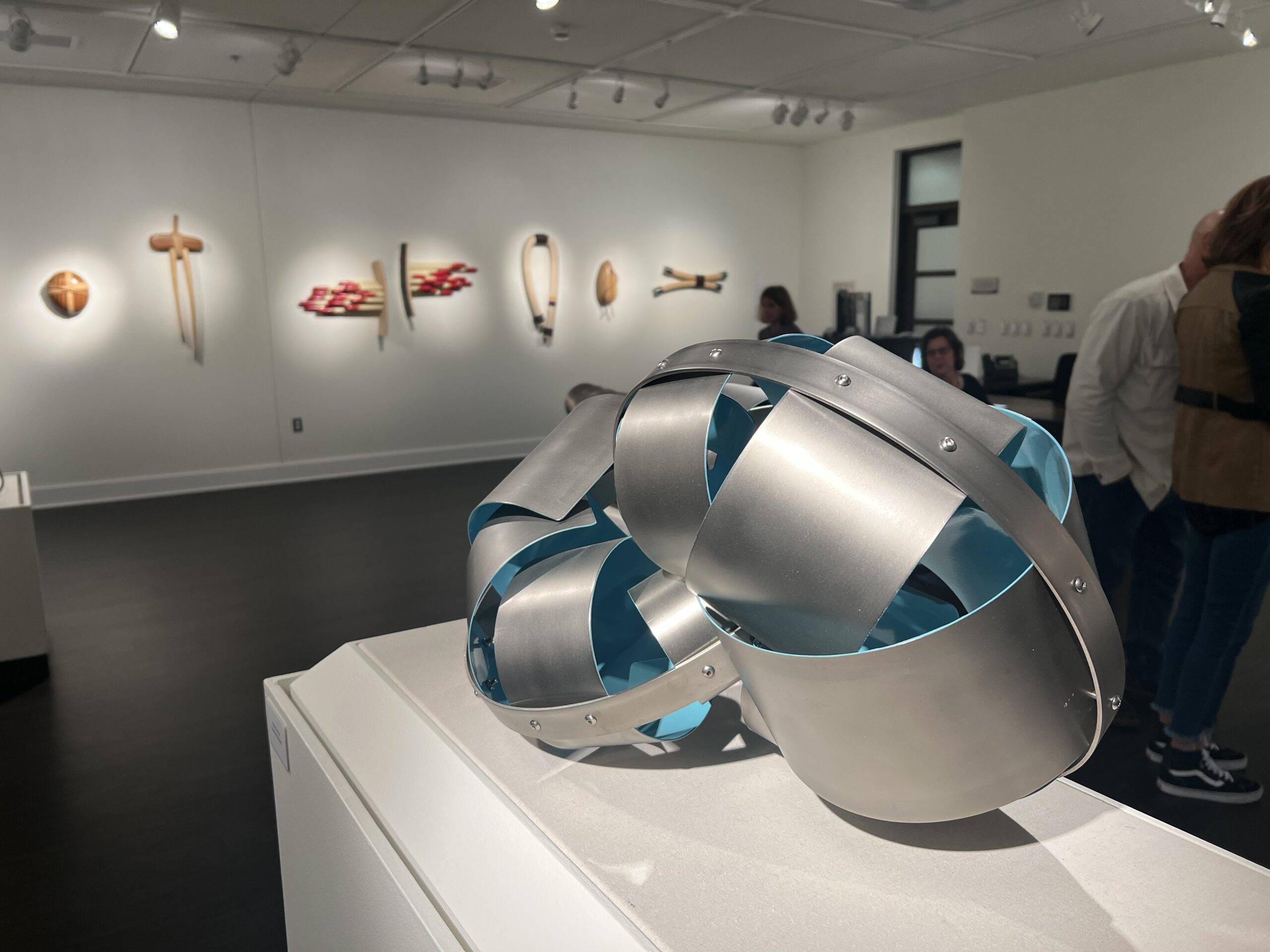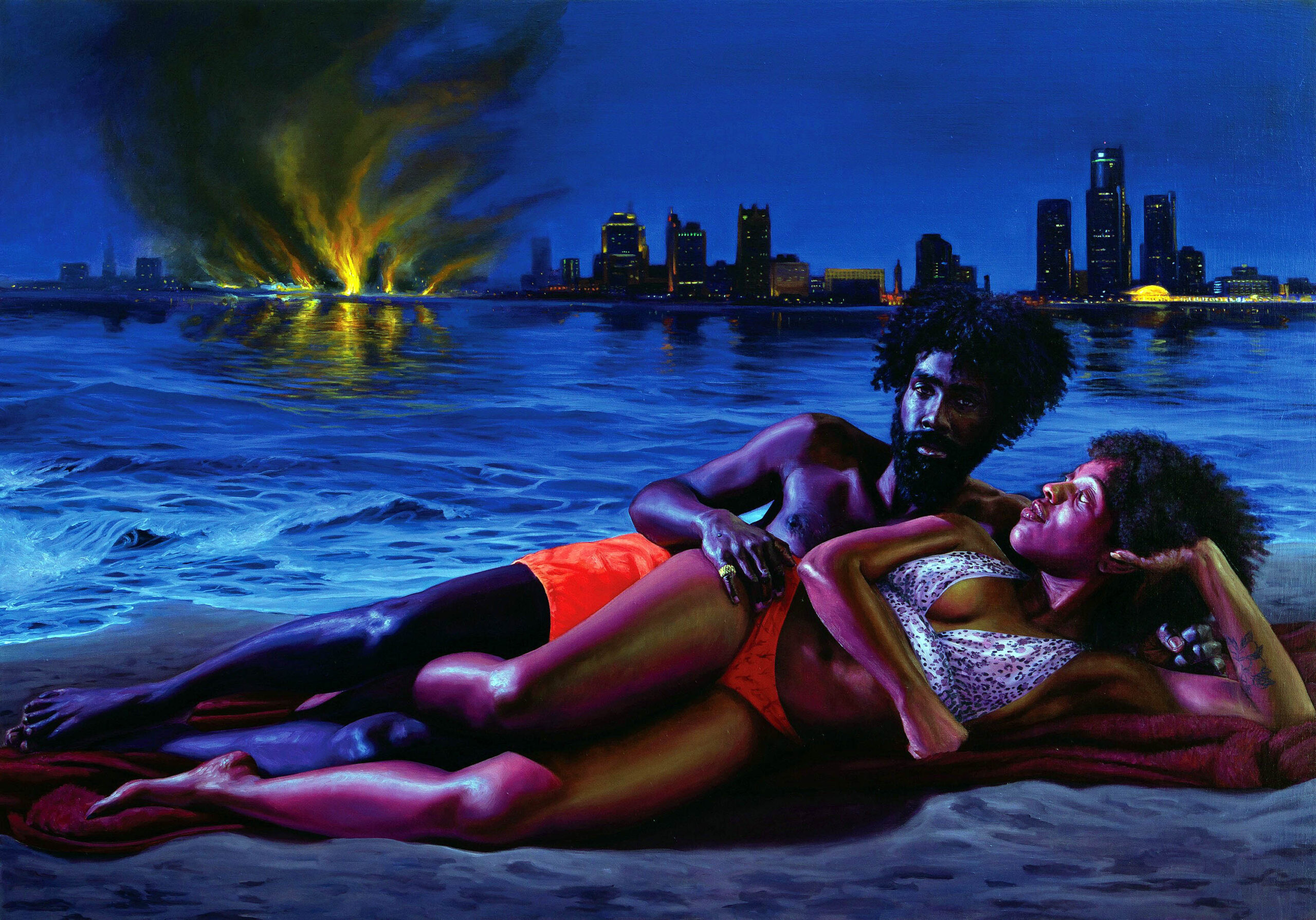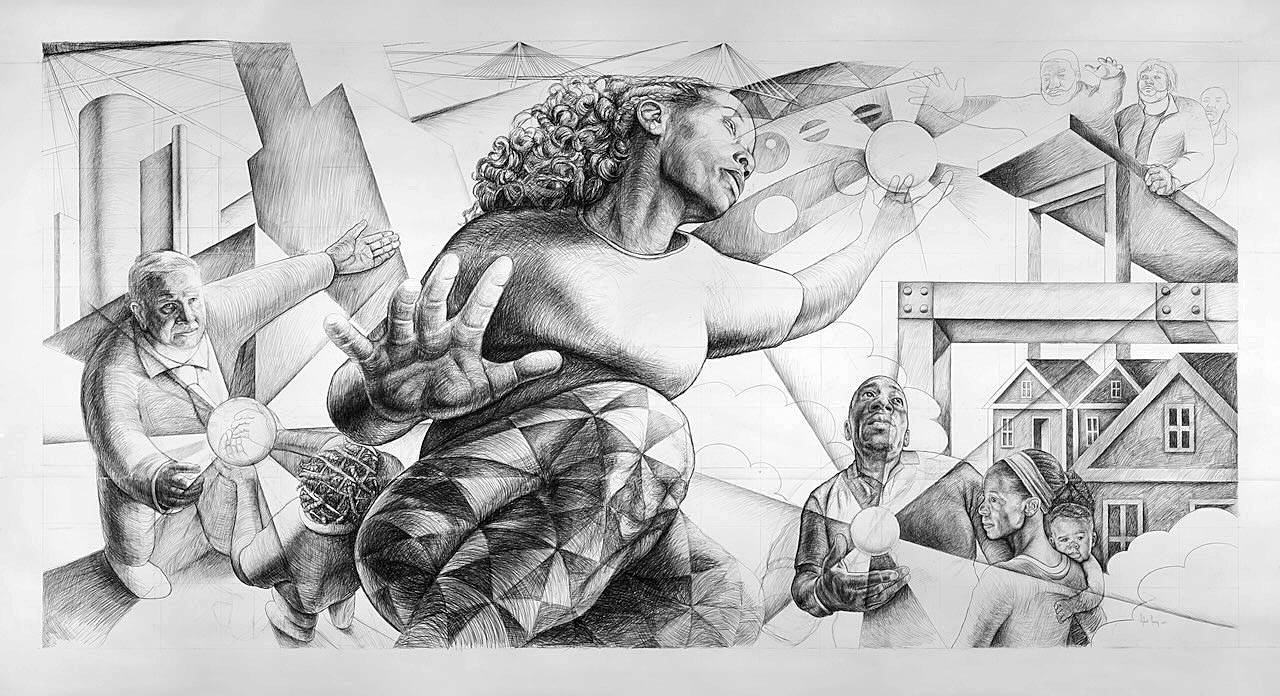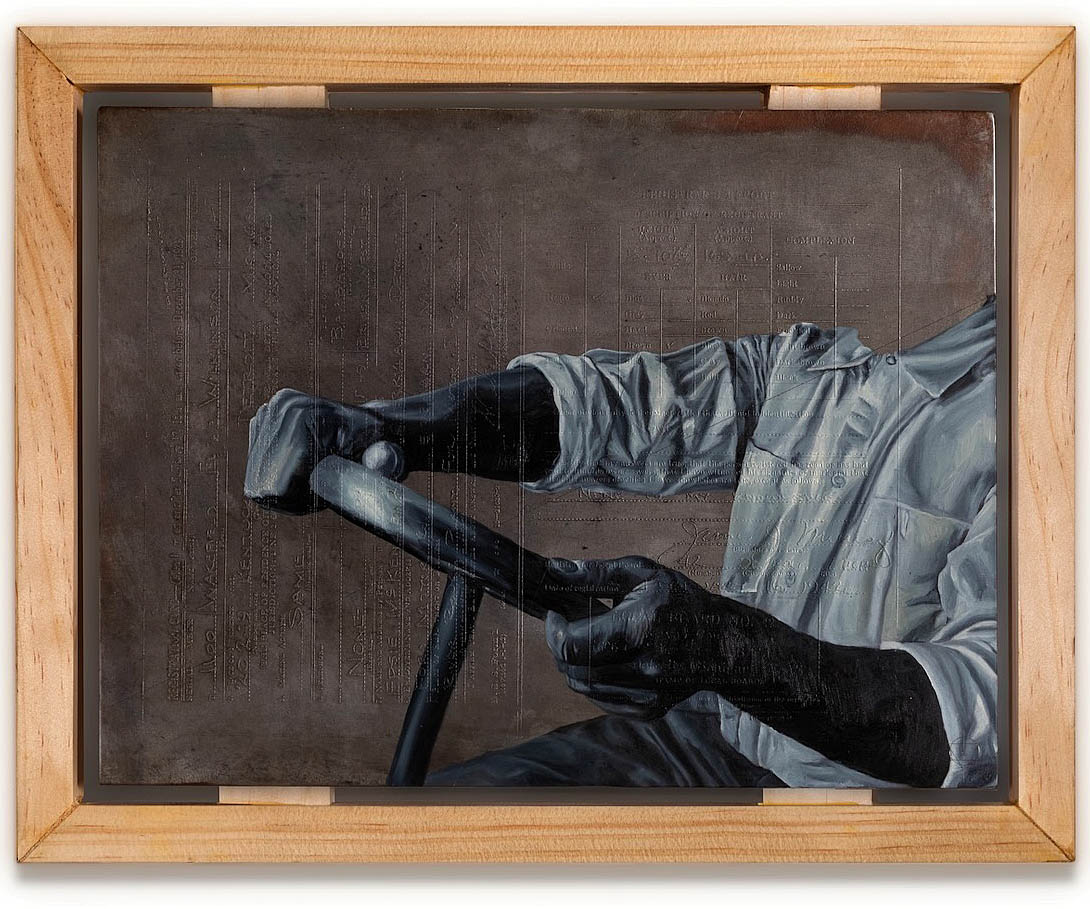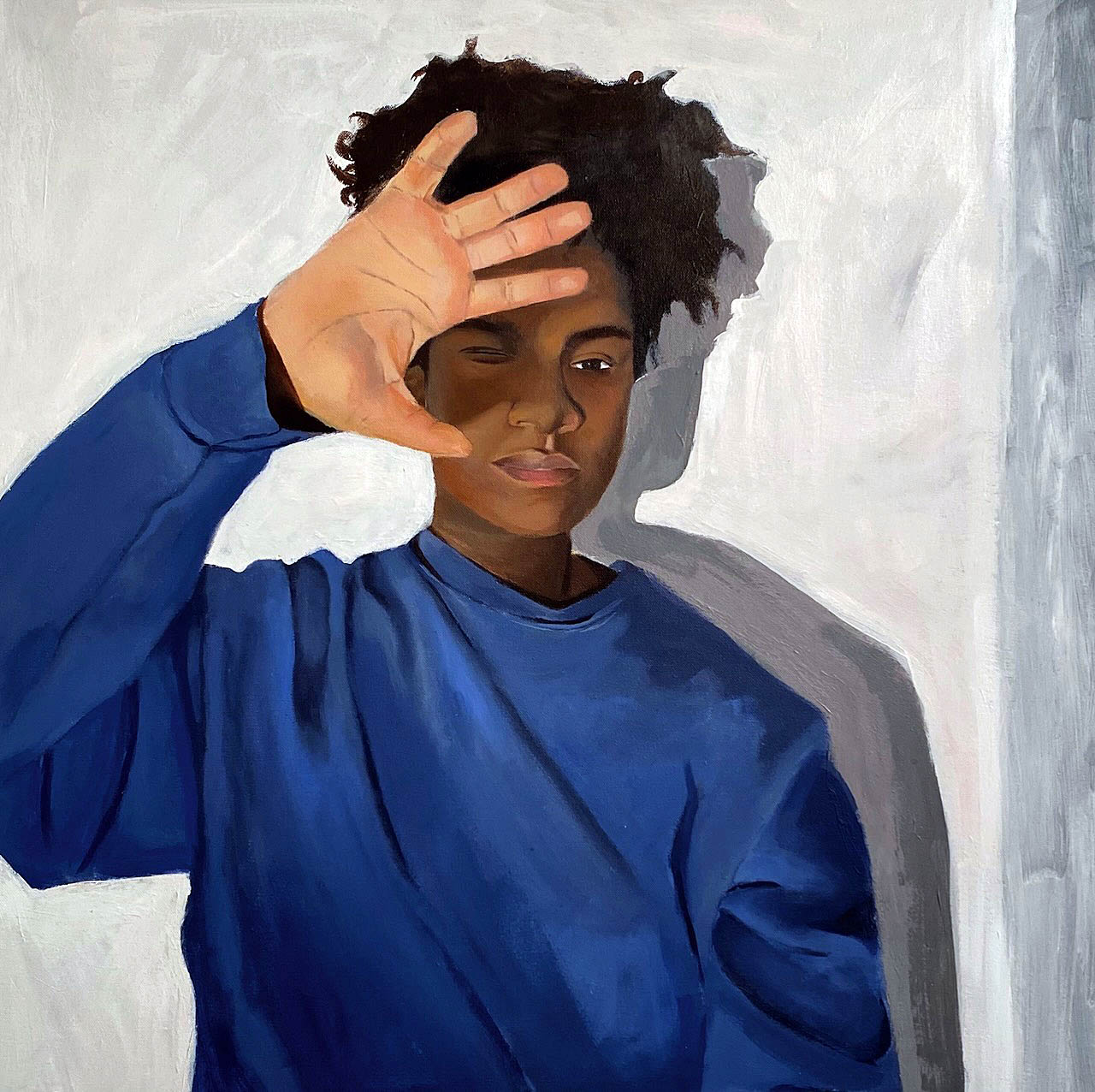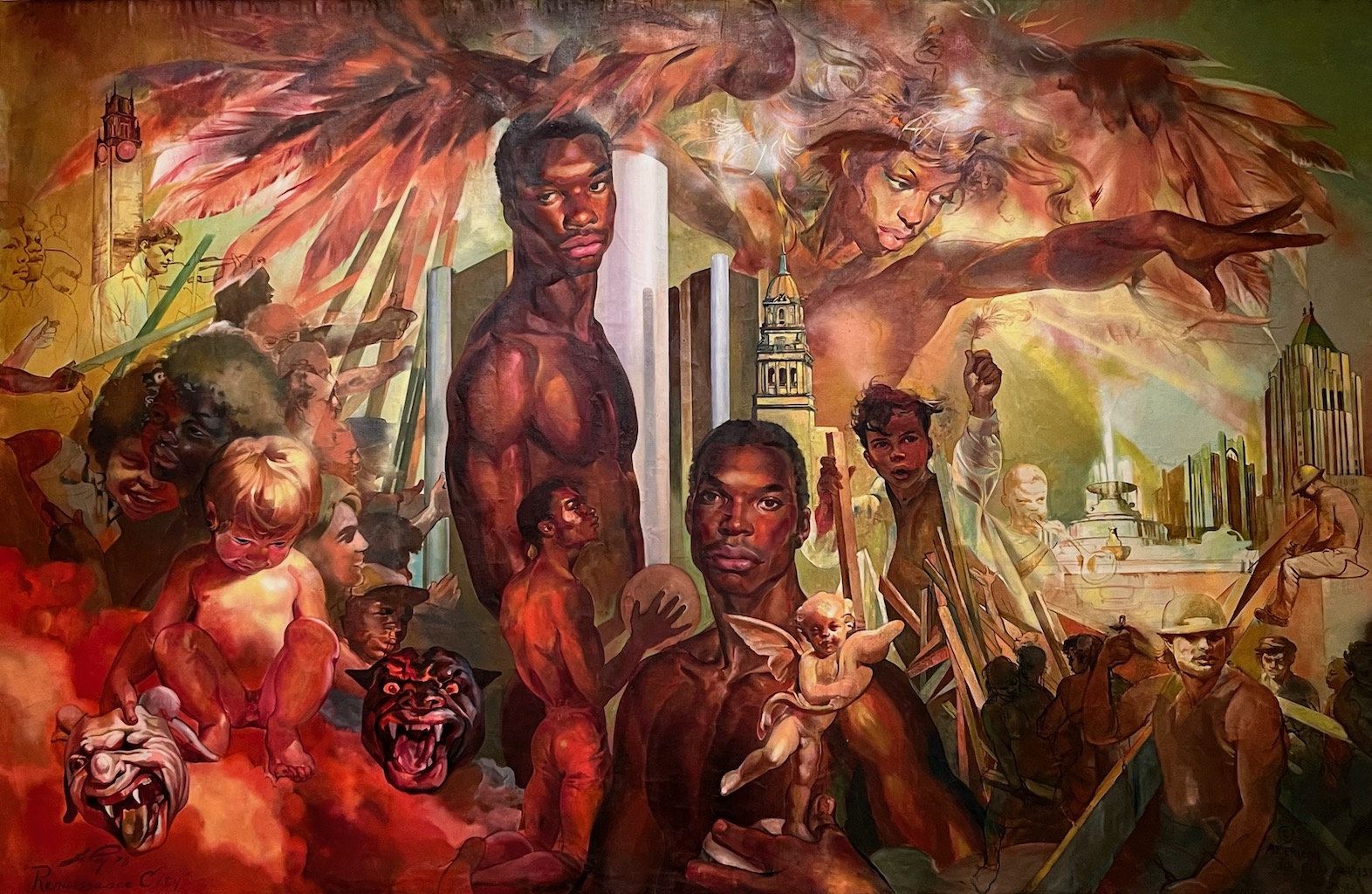Larry Zdeb: Dream Journals – Mixed Media Assemblages at the Color|Ink Studio
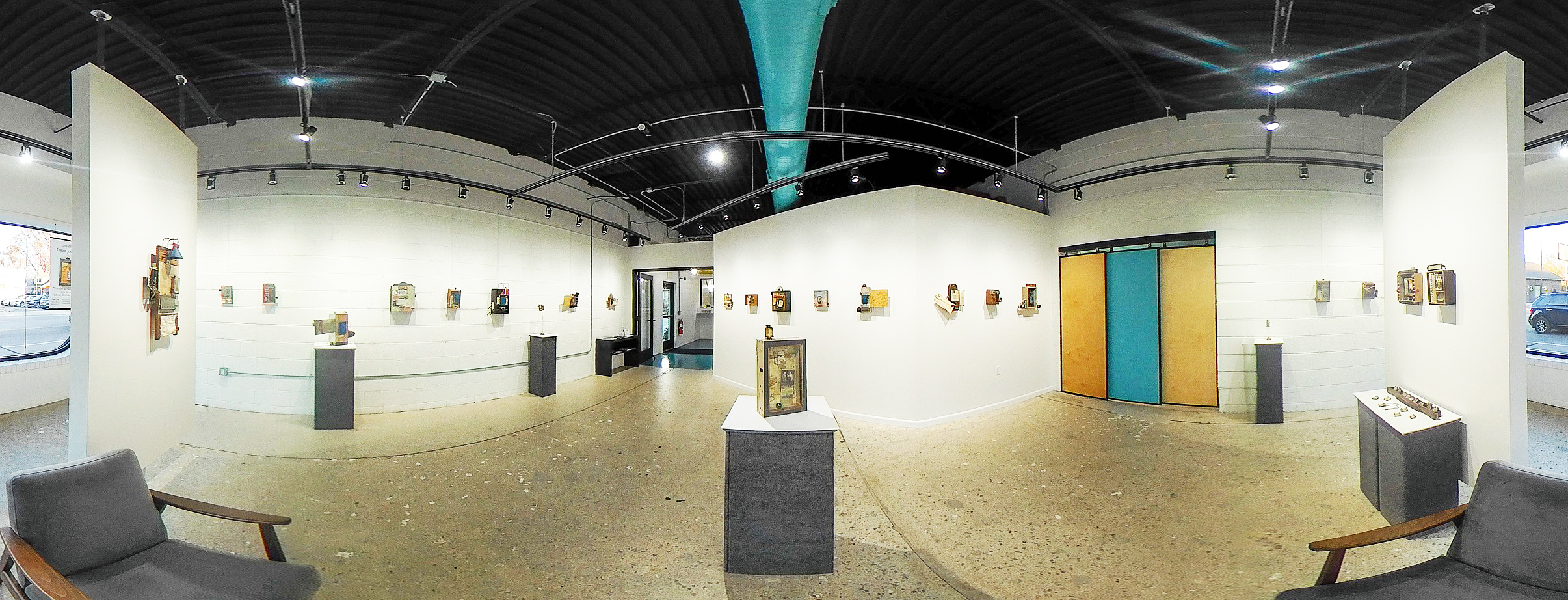
“Dream Journals,” a solo show of mixed media assemblages by Troy artist Larry Zdeb, installation and reception at Color|Ink Studio, Dec. 10, 2023.
Larry Zdeb is a connoisseur of other people’s memories and a gifted poet of the found object. He collects anonymous vintage photographs, broken bits of machinery and unidentifiable detritus, fashioning them into cryptic but emotionally resonant assemblages that puzzle and intrigue. Culled from rich troves of innumerable estate sales, musty basements and obscure garages in Detroit and environs over the last 20 years, 40 of his three-dimensional constructs, entitled “Dream Journals,” will populate the walls of Color|Ink Studio in Hazel Park until December 20, 2023.
Assemblage, the 3-d cousin of 2-d collage, has been a dominant genre in artists’ practice since the early 20th century. The constructivists, followed by cubists and surrealists–and thousands of artists from then to now–have found the idiosyncratic combination of industrially produced images and objects, handmade tchotchkes and cryptic images into compelling artworks an ideal mode for expressing the dislocations and absurdities of modern life. Picasso and Braque, Marcel Duchamp, Jean Dubuffet, and Robert Rauschenberg have all had their say, but Zdeb finds he is most influenced by the surrealist boxes of Joseph Cornell as well as the work of a lesser-known near-contemporary Janice Lowry (1946-2009).
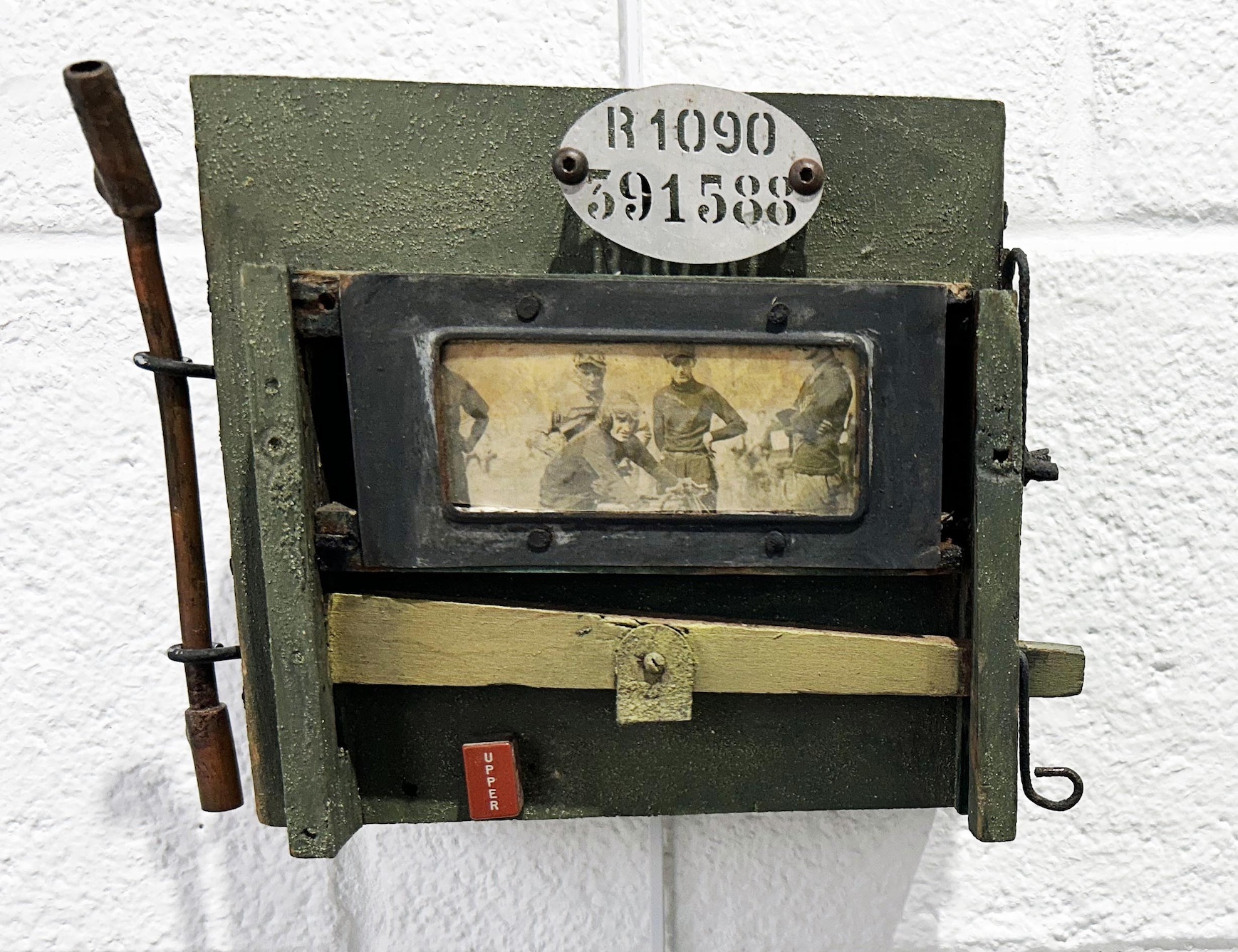
Elsinore, Larry Zdeb, 2015, wood box with photograph in a steel frame, automotive identification number, adding machine button and copper tube.
Zdeb was born in Highland Park, Michigan, and discovered his vocation for art as a draftee during the Vietnam War era. He was trained and served as an Air Force cartographer, and upon his discharge studied art at Oakland Community College. He began creating his signature assemblages in 2003 and has since participated in over a hundred exhibitions from California to New York City.
The artworks in “Dream Journals” are drawn from unlovely constituent parts, often technical or industrial in nature—a funnel, a cloudy lens, obscure bits of obsolete technical equipment. He traffics only in the broken and discarded, never breaking an intact object, always intent upon reclaiming the discarded. His color palette runs to shades of gray, olive drab and khaki reminiscent of his military experience. These aggregations of neglected and lost mementos, while carefully crafted, maintain an air of the contingent. They are formally simple but emotionally complex, nostalgic but unsentimental.

Harris, Larry Zdeb, 2012, 8” x 9″ wood drawer, photograph under engineering acetate, clock spring, brass stencil, fasteners & telescope part.
His assemblage Harris illustrates Zdeb at his most enigmatic. A photo of a formally dressed young man is mounted inside a small wooden box. He gazes out at the viewer seriously, but his expression is obscured by the shadow of a sheet metal label placed above, and a thin curl of steel in front of his face emphasizes his anonymity. Outside the box, an attached, cloudy lens implies that perhaps some memories can’t be retrieved.
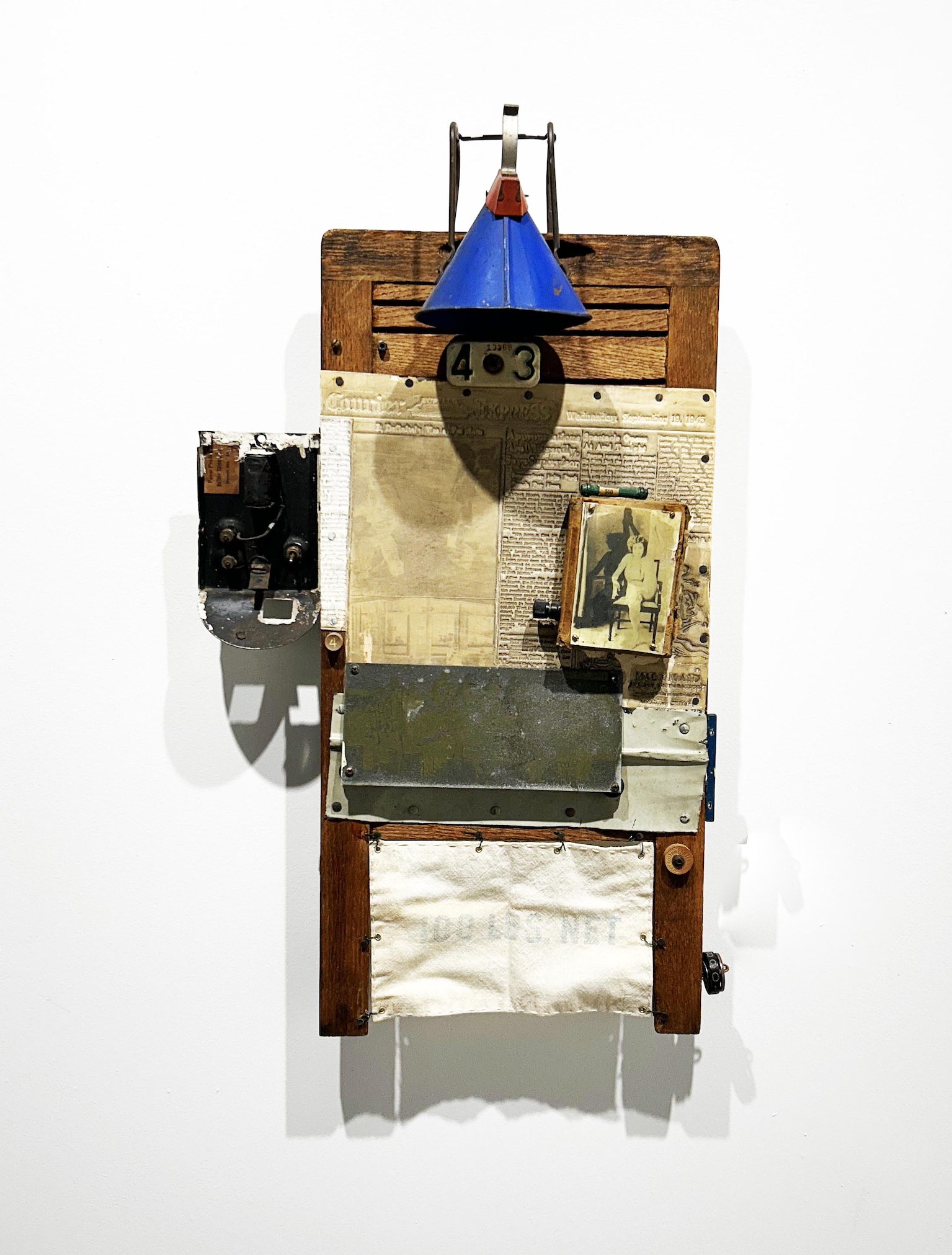
Wednesday, Larry Zdeb, 2010, 14” x 24″ wood frame, 1943 license plate tab, cardboard box with the pictures, newspaper engraver mat, painted tin, feed sack, wire, adding machine part, sand toy, steel part with switch for battery-powered illumination.
In the work Wednesday, the image of a comely young woman in an improbable pose raises more questions than it answers. Next to her, a headline promises: “Spectacle Opens at Auditorium Tonight.” Is she the spectacle? Once again, shadow plays an important part in the composition, the ultramarine funnel casting a heart-shaped penumbra on the forms below. The specificity of the day and date underline–but don’t explain–the mystery of the artwork’s meaning.

Les Preludes, Larry Zdeb, 2023, 12” x 19″ wood, violin part with license plate number, brass mesh, fasteners, hinge, photograph under painted orange plastic, leather glove cut fingers, player piano part with wires, changeable alarm clock numbers, newspaper engraver mat, paper & cloth.
Zdeb offers a small collection of performance-related imagery in Les Preludes: a photograph of a dancer–her prettiness marred by a grubby translucent orange overlay–part of a violin, embossed advertisements, numbers (seat numbers?) The constituent parts are arranged in a row like a sentence or a line from a poem. In one of his more recent assemblages, the artist breaks out of his usual preferred box format into a line of connected images.
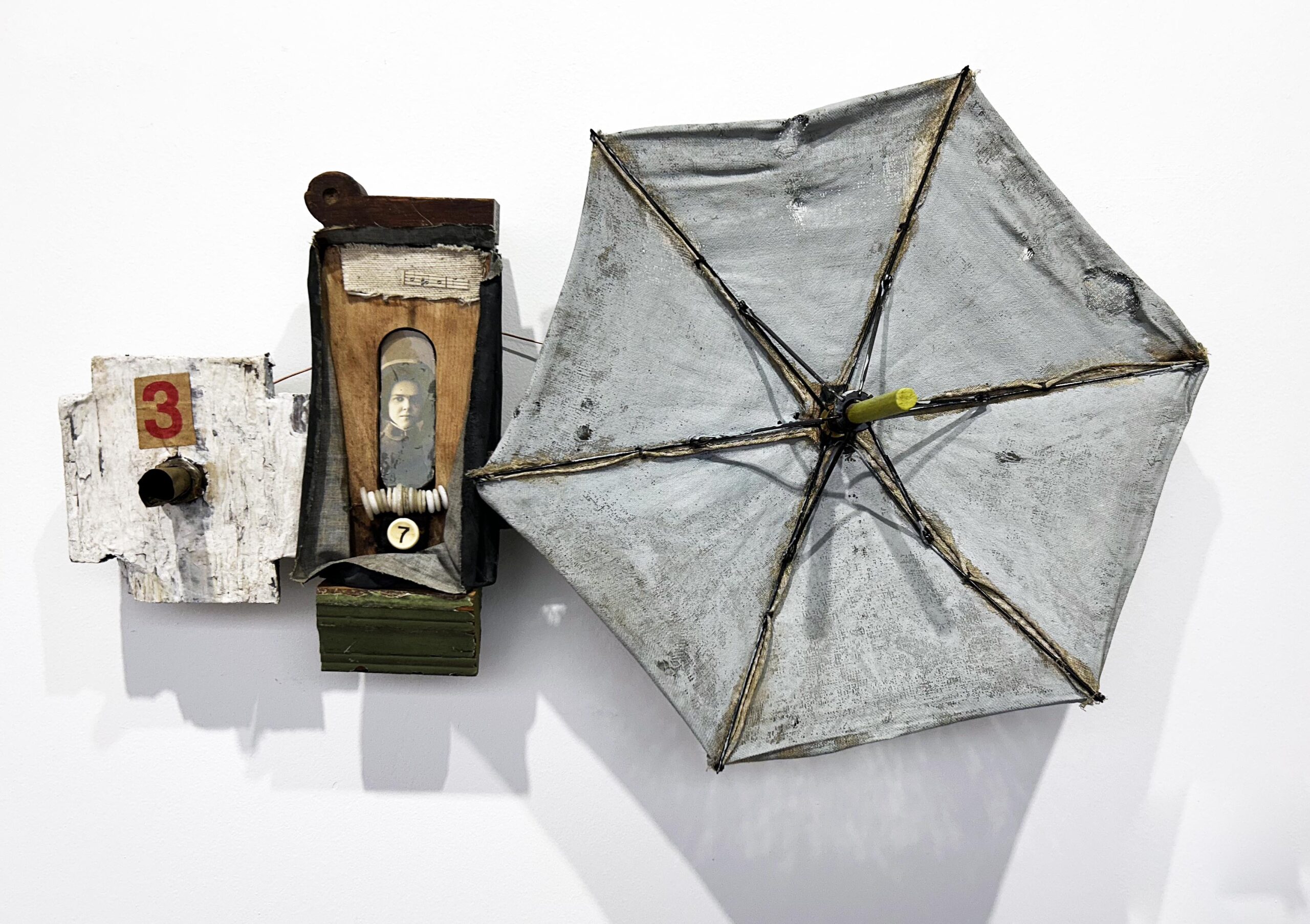
Parasol, 2022, Larry Zdeb, 12” x 18”, painted toy parasol, architectural wood parts, piano part with cloth, antique photograph, wood, copper, buttons, adding machine button.
Parasol, similarly, offers a kind of triptych: a modified cross on the left connects to the center image of a young woman in a hat, surrounded by an elaborate, improvised wooden frame and followed on the right by an open canvas sunshade. The rough textures and faded, abraded colors of the combined elements undermine their intrinsic sweetness.
Zdeb’s artworks might all be said to be about memory and its elusive nature. He returns again and again to photographic images of unidentified subjects, often in costume or in uniform, as if they are reaching out from the past to present themselves to a modern audience. His components form implied narratives that hint at, but then withhold their meanings.
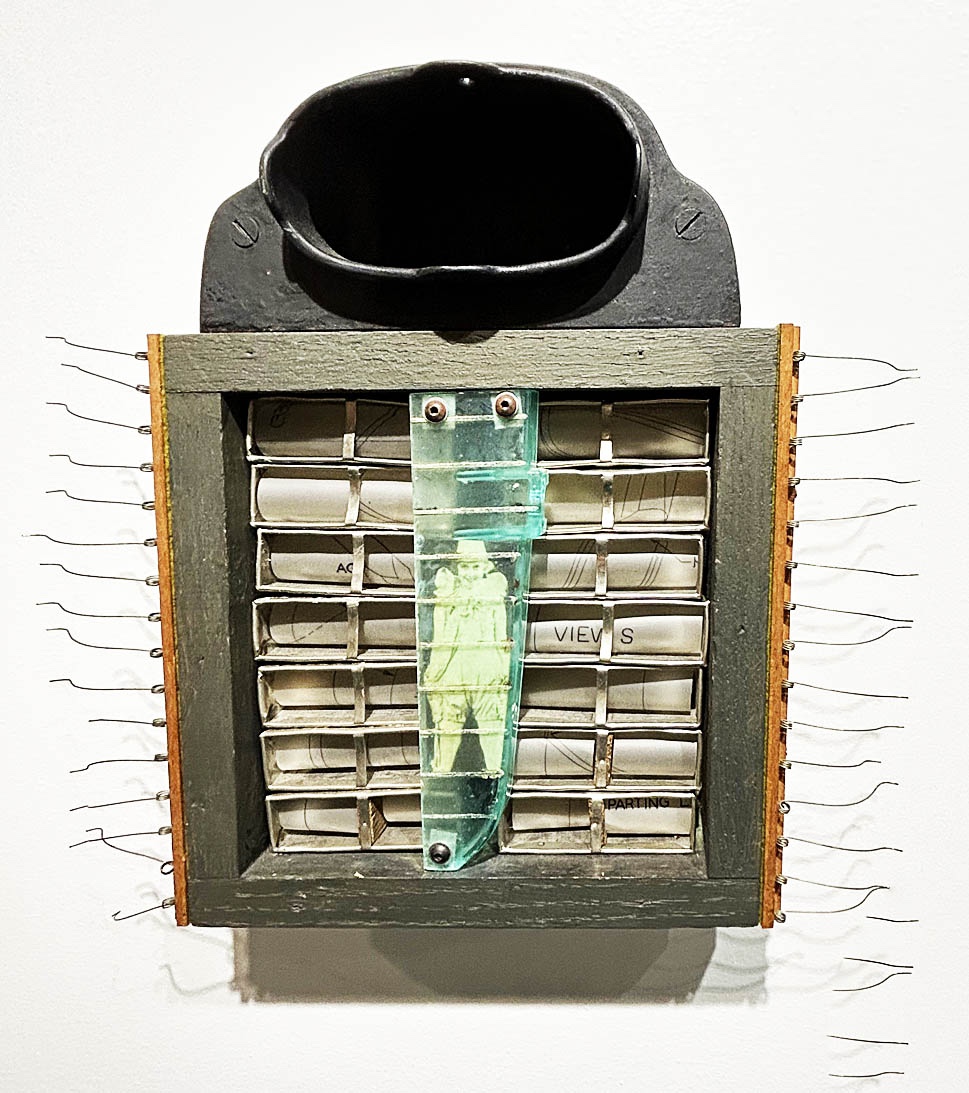
The Clown, Larry Zdeb, 2022, 13” x 14, wood box with steel chambers, each chamber has rolled engineering acetate pieces with rolling wood balls inside, player piano parts with wires, cast iron vent and photograph under refrigerator door plastic.
Each composition in “Dream Journals” is its own conundrum. Zeb is careful not to reveal too much—that would be telling. Instead, his basketball players and ballerinas, his musicians and mannequins, suggest half-remembered visions and barely recalled reminiscences of past friends, past events, and past lives. These imperfectly recalled scenarios illuminate a larger theme—that no matter how hard we try to retain our memories, they are constantly in the process of slipping away.
Dream Journals: Mixed Media Assemblages by Larry Zdeb at the Color|Ink Studio through December 20, 2023.


